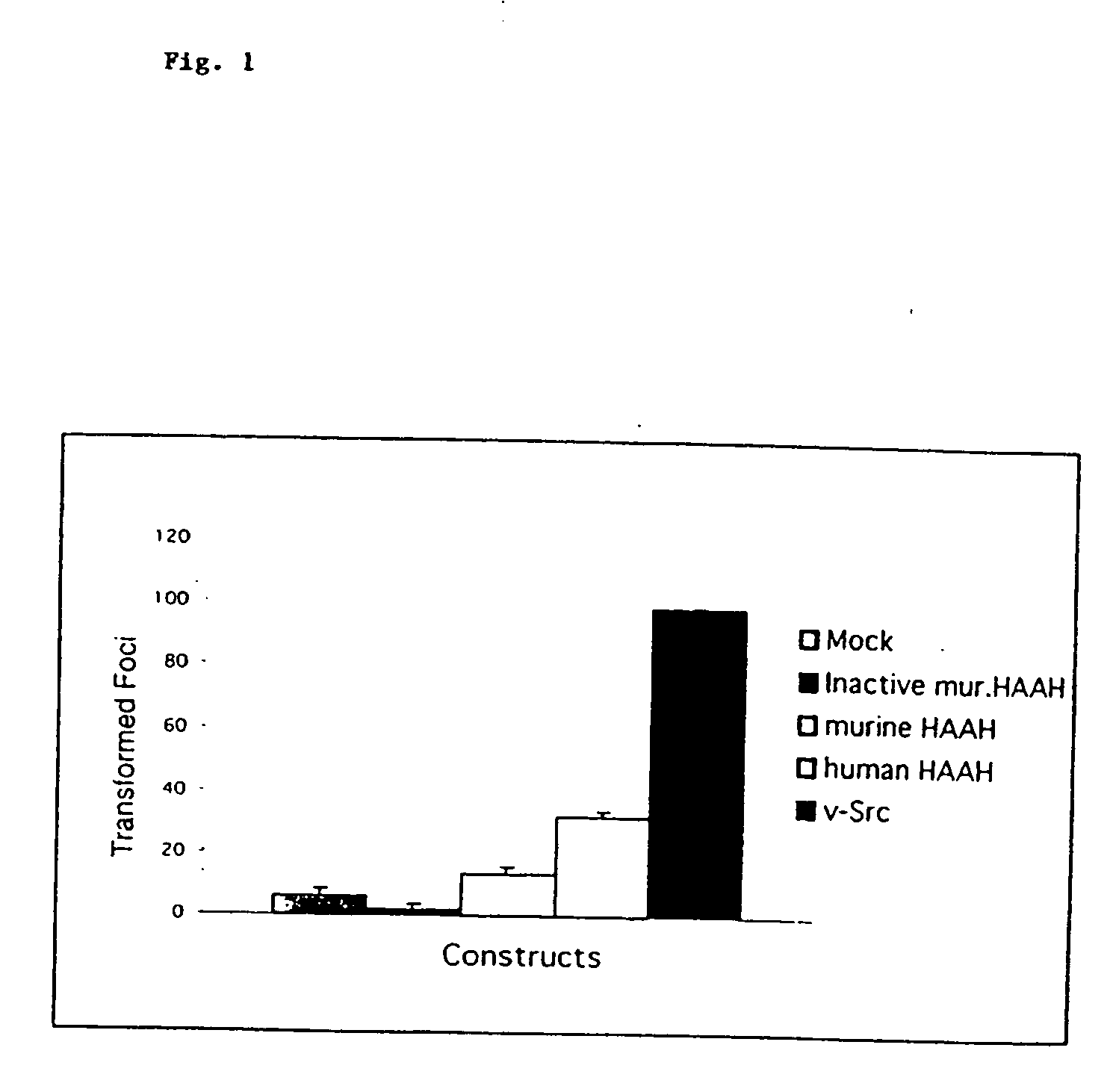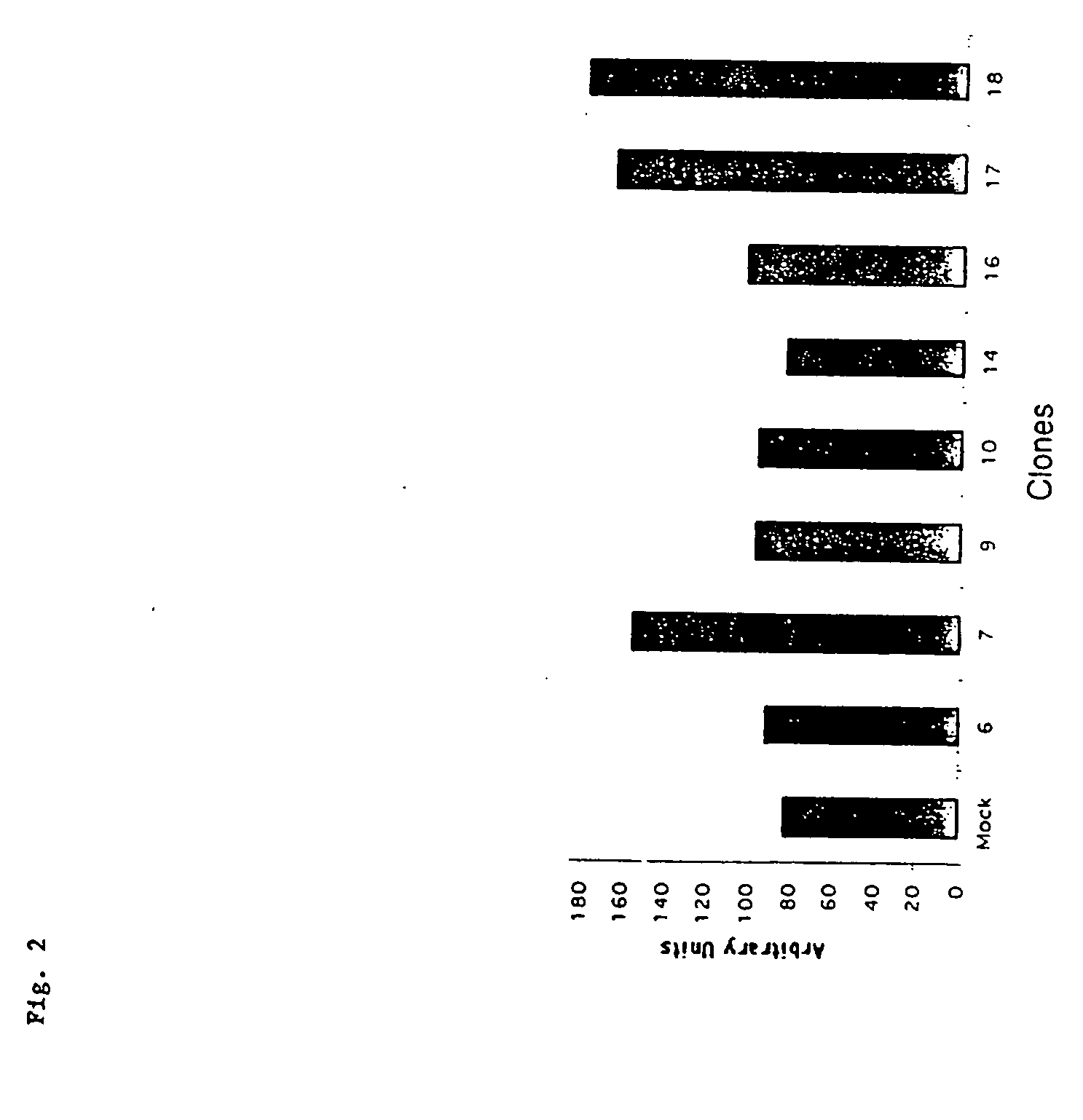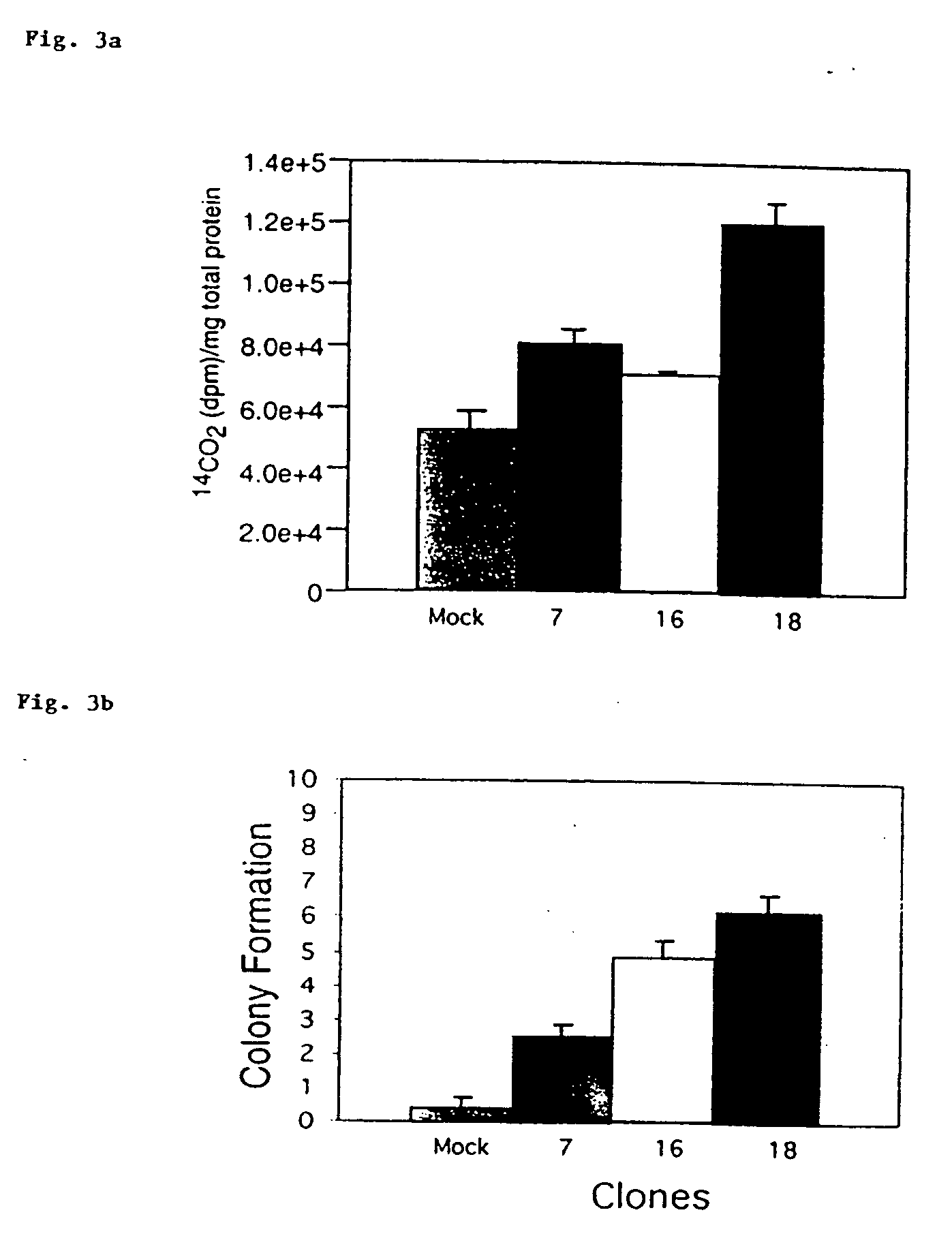Diagnosis and treatment of malignant neoplasms
a malignant neoplasm and diagnosis technology, applied in the field of diagnosis and treatment of malignant neoplasms, can solve the problems of the lowest five-year survival rate of all cancers, the prognosis of pancreatic carcinoma, etc., and achieve the effect of high stringency
- Summary
- Abstract
- Description
- Claims
- Application Information
AI Technical Summary
Benefits of technology
Problems solved by technology
Method used
Image
Examples
example 1
Increased Expression of HAAH is Associated with Malignant Transformation
[0106] HAAH is a highly conserved enzyme that hydroxylates EGF-like domains in transformation associated proteins. The HAAH gene is overexpressed in many cancer types including human hepatocellular carcinomas and cholangiocarcinomas. HAAH gene expression was found to be undetectable during bile duct proliferation in both human disease and rat models compared to cholangiocarcinoma. Overexpression of HAAH in NIH-3T3 cells was associated with generation of a malignant phenotype, and enzymatic activity was found to be required for cellular transformation. The data described below indicate that overexpression of HAAH is linked to cellular transformation of biliary epithelial cells.
[0107] To identify molecules that are specifically overexpressed in transformed malignant cells of human hepatocyte origin, the FOCUS hepatocellular carcinoma (HCC) cell line was used as an immunogen to generate monoclonal antibodies (mAb...
example 2
Expression of AAH and Growth and Invasiveness of Malignant CNS Neoplasms
[0147] AAH is abundantly expressed in carcinomas and trophoblastic cells, but not in most normal cells, including those of CNS origin. High levels of AAH expression were observed in 15 of 16 glioblastomas, 8 of 9 anaplastic oligodendrogliomas, and 12 of 12 primitive neuroectodermal tumors (PNETs). High levels of AAH immunoreactivity were primarily localized at the infiltrating edges rather than in the central portions of tumors. Double-label immunohistochemical staining demonstrated a reciprocal relationship between AAH and tenascin, a substrate for AAH enzyme activity. PNET2 neuronal cell lines treated with phorbol ester myristate or retinoic acid to stimulate neuritic extension and invasive growth exhibited high levels of AAH expression, whereas H2O2-induced neurite retraction resulted in down-regulation of AAH. PNET2 neuronal cells that stably over-expressed the human AAH cDNA had increased levels of PCNA an...
example 3
Increased HAAH Production and IRS-Mediated Signal Transduction
[0176] IRS-1 mediated signal transduction pathway is activated in 95% of human HCC tumors compared to the adjacent uninvolved liver tissue. HAAH is a downstream effector gene involved in this signal transduction pathway. HAAH gene upregulation is closely associated with overexpression of IRS-1 in HCC tumors as revealed by immunohistochemical staining and Western blot analysis. A high level of HAAH protein is expressed in HCC and cholangiocarcinoma compared to normal hepatocytes and bile ducts. Both of these tumors also exhibit high level expression of IRS-1 by immunohistochemical staining. FOCUS HCC cell clones stably transfected with a C-terminal truncated dominant negative mutant of IRS-1, which blocks insulin and IGF-1 stimulated signal transduction, was associated with a striking reduction in HAAH gene expression in liver. In contrast, transgenic mice overexpressing IRS-1 demonstrate an increase in HAAH gene expressi...
PUM
| Property | Measurement | Unit |
|---|---|---|
| catalytic | aaaaa | aaaaa |
| affinity | aaaaa | aaaaa |
| cell surface localization | aaaaa | aaaaa |
Abstract
Description
Claims
Application Information
 Login to View More
Login to View More - R&D
- Intellectual Property
- Life Sciences
- Materials
- Tech Scout
- Unparalleled Data Quality
- Higher Quality Content
- 60% Fewer Hallucinations
Browse by: Latest US Patents, China's latest patents, Technical Efficacy Thesaurus, Application Domain, Technology Topic, Popular Technical Reports.
© 2025 PatSnap. All rights reserved.Legal|Privacy policy|Modern Slavery Act Transparency Statement|Sitemap|About US| Contact US: help@patsnap.com



